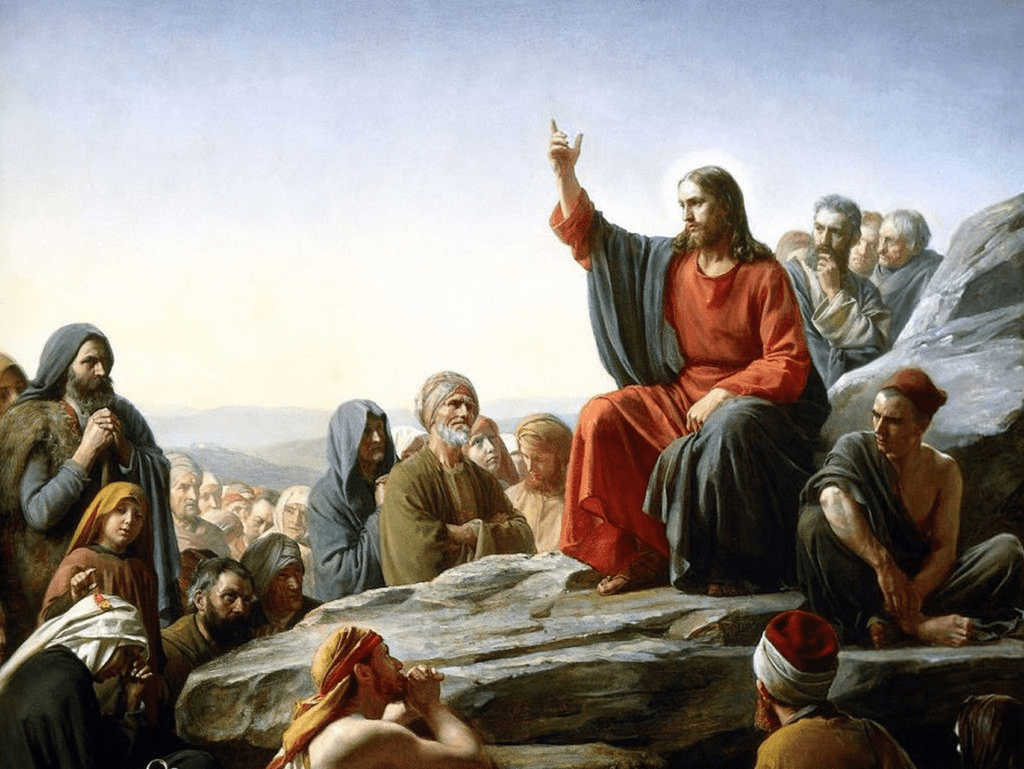
In 2000, the American Civil Liberties Union threatened a lawsuit unless a Kansas City courthouse removed a Ten Commandments monument from its lawn. The monument was moved about 100 feet across the street to St. Anthony’s Catholic Church so that it would be on private property and no longer subject to the whims of lawyers and judges. In response, businessman John Menghini founded Project Moses with the goal of installing Ten Commandments monuments on the grounds of places of worship, religious schools, and private properties throughout the country.
There is a crucial detail I want us to pay attention to. The Ten Commandments monuments promoted by Project Moses have the Beatitudes on the other side. When I was in the seminary, a Bishop told me he suggested putting the Beatitudes on the other side of these monuments to Project Moses. His reasoning was that the Beatitudes are the Ten Commandments’ positive side.
In a way, the Ten Commandments say what not to do, while the Beatitudes say what to do to be happy. Further, most of the Ten Commandments tell us about the minimum evil we should avoid, while the Beatitudes are about the most extraordinary holiness we can aim for.
This point is crucial since our spiritual life cannot be reduced to a laundry list of things to avoid. Instead, things to avoid are only a starting point. From there, we can elevate ourselves to an infinity of possibilities. Each virtue can be practiced to a heroic level.
This is one of the reasons why Aquinas and many other theologians start their treatise on moral theology by talking about happiness and the practice of virtue. The Beatitudes are the highest expression of the life of virtue – practicing those virtues to a heroic degree.
I lived in Detroit, MI, for seven years. Besides visiting car museums, one of the highlights of the Motor City is the Shrine of Blessed Solanus Casey. Of course, the main attraction is his tomb. However, it is fascinating to see life-size bronze figures of eight contemporary people, four women and four men, who represent the Beatitudes. These individuals have shown through their life and ministry how to live Christianity in action. We have people such as St. Mother Theresa, Dorothy Day, and Takashi Nagai.
The Beatitudes highlight the fact that holiness is very varied. Yes, holiness is the perfection of Charity; it is becoming like Jesus. However, there are as many ways of becoming a saint as the diversity of Beatitudes. Each Beatitude is a different path to attain the perfection of love.
For instance, let’s take the Servant of God Takashi Nagai. This Japanese scientist and professor of radiology at the University of Nagasaki faced his greatest challenges after the atomic bomb turned his city into a nuclear wasteland. While bedridden and slowly dying from the consequences of being overexposed to radiation, he prayed, offered his suffering, and wrote extensively as a witness for peace to his own people and the world.
Differently, the Servant of God Dorothy Day sanctified herself by starting the Catholic Worker Movement. The Gospel inspired her social activism and her passion for justice and the cause of the oppressed.
Takashi Nagai and Dorothy Day were very different people with different callings. Nevertheless, they both got to the heights of holiness. One by suffering and advocating for peace, the other by working for justice.
Let’s reflect on the Beatitudes. Which one of them am I called to practice heroically?

